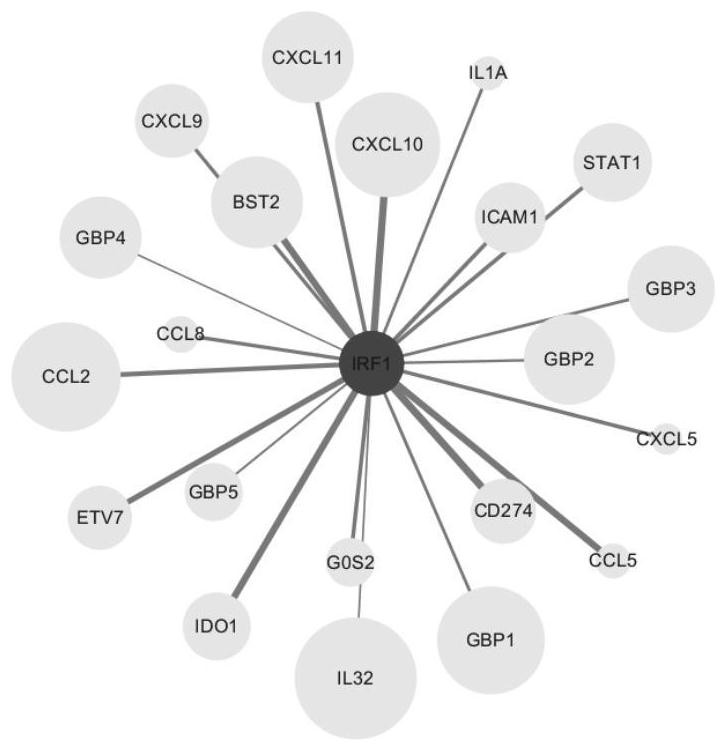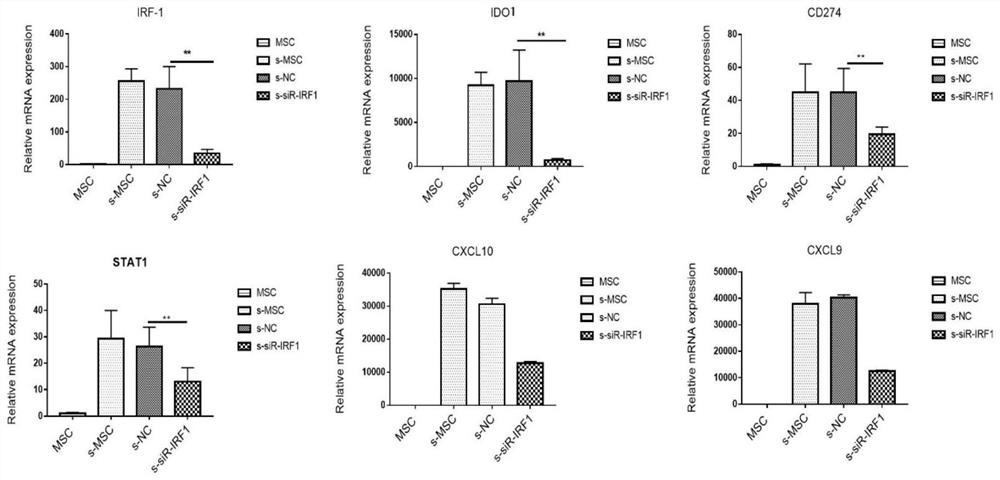Application of IRF1 (Interferon Regulating Factor 1) in regulating and controlling immune regulation effect of mesenchymal stem cells and product
A technology of mesenchymal stem cells and immune regulation, applied in the biological field, can solve problems such as unclear plasticity mechanism
- Summary
- Abstract
- Description
- Claims
- Application Information
AI Technical Summary
Problems solved by technology
Method used
Image
Examples
Embodiment 1
[0027] Example 1 Inflammatory factor IFN-γ combined with TNF-α stimulates MSCs to highly express IRF1
[0028] The inflammatory factor IFN-γ combined with TNF-α (20ng / ml) pretreated the isolated and cultured umbilical cord (hu-MSC), placenta (hp-MSC), and amniotic membrane (hm-MSC) MSCs for 12 hours, and established single cells using the 10x Genomics platform Transcriptome library, the mRNA expression of IRF1 in MSC and s-MSC (inflammatory factor stimulation group) was analyzed at the single-cell level, and the results showed that umbilical cord, placenta, and amniotic MSC under the inflammatory microenvironment highly expressed IRF1 ( figure 1 ).
Embodiment 2
[0029] Example 2 Analysis of target gene network regulated by transcription factor IRF1 based on single-cell sequencing
[0030] Based on three MSC single-cell transcriptome libraries of umbilical cord, placenta, and amniotic membrane, SCENIC software can identify the co-expressed modules (regulon) between transcription factors (TFs) and potential target genes and the regulon activity score (regulon activity score) of each cell , RAS), the results showed that IRF1 can regulate the expression of MSC immunosuppressive related genes STAT1, IDO1, CD274 and chemokines CXCL9, CXCL10, suggesting that IRF1 can affect the MSC immunosuppressive properties ( figure 2 ).
Embodiment 3
[0031] Example 3 Molecular level verification that IRF1 regulates the expression of STAT1, IDO1, CD274 and chemokines CXCL9 and CXCL10
[0032] Umbilical cord MSCs were inoculated into 6-well plates (1×10 5 / well), cultured for 24 hours, and when the cell density was about 70%, the transfection reagent jetPRIME (polyplus) was used to transiently transfect siRNA into umbilical cord MSCs for knocking down the expression of IRF1. The sequence of siR-IRF1 is shown in Table 1 (Beijing Sangong). A total of three siR-IRF1s were constructed, and 1110 with the highest knockdown efficiency was selected for subsequent experiments. The transfection system is: buffer 120 μL, jetPRIME 3 μL, siR-IRF1 or NC 4 μL, add 1.88 ml serum-free a-MEM medium, so that the siRNA concentration is 50 μM, and continue to culture for 6-8 hours to replace the complete medium containing 10% FBS, Continue to cultivate for 24h. IFN-γ combined with TNF-α (20ng / ml) pretreated each group of cells after transfect...
PUM
 Login to View More
Login to View More Abstract
Description
Claims
Application Information
 Login to View More
Login to View More - R&D
- Intellectual Property
- Life Sciences
- Materials
- Tech Scout
- Unparalleled Data Quality
- Higher Quality Content
- 60% Fewer Hallucinations
Browse by: Latest US Patents, China's latest patents, Technical Efficacy Thesaurus, Application Domain, Technology Topic, Popular Technical Reports.
© 2025 PatSnap. All rights reserved.Legal|Privacy policy|Modern Slavery Act Transparency Statement|Sitemap|About US| Contact US: help@patsnap.com



